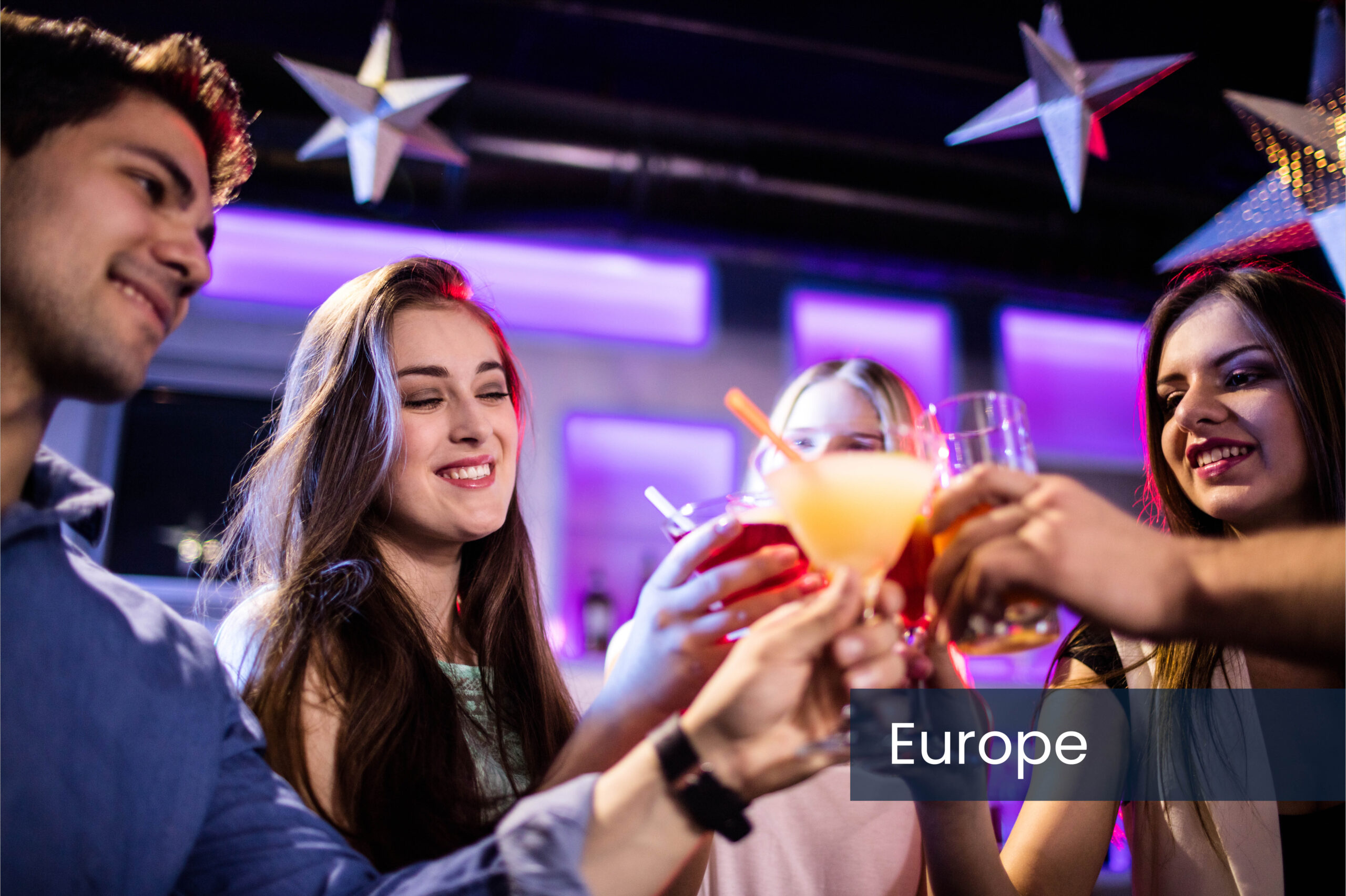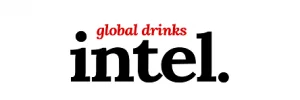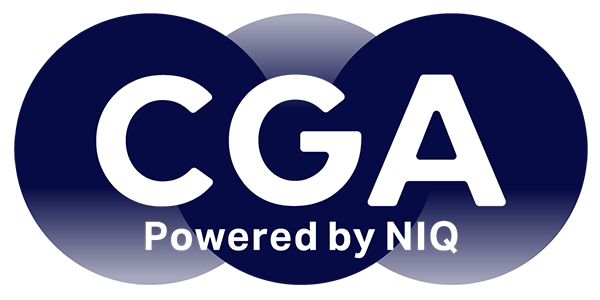
George Argyropoulos, CGA by NIQ’s Managing Director, EMEA – On Premise, explains why the world’s largest generation is so critical to the industry’s future. He explores their unique needs, preferences, and shifting trends to help businesses better understand and connect with them.
The current challenging economic environment is increasingly tightening consumers’ disposable income and, despite its resilience, the European On Premise sector is feeling the strain. Shifting habits and attitudes towards drinks consumption add another layer of complexity, making this traditionally crucial channel for brand building even more competitive. In these challenging times, when space for brands is being squeezed (both on the bar and on the shelf), legal drinking age Gen Z consumers – those born between 1997 and 2012 – are a key demographic to engage for success in the industry. This largest generation ever (two billion strong, around 25% of the world’s population and 17% in the EU) have had their out-of-home consumption negatively impacted by the pandemic, but they remain the wealthiest demographic and are expected to see the highest spending growth in the coming years, too.
Of course, successfully engaging with them is easier said than done. Our recent Nielsen Insider survey found that nearly six in ten drinks industry leaders are unsure how to meet this generation’s needs. Societal and historical changes have shaped this generation to be markedly different from those that came before, making their behaviour – and its evolution – harder to predict. But careful analysis of On Premise-specific insights can certainly help shed light on Gen Z’s characteristics, attitudes, and needs.
The social factor
The On Premise is a vital space for brands to connect with Gen Z drinkers, as this generation often experiences beverage brands for the first time while enjoying food or drinks out of home. Research from CGA by NIQ’s global On Premise User Survey (OPUS) confirms how central pubs, bars, restaurants, and cafés are to Gen Z’s lives: nearly three quarters (72%) visit weekly – 16 percentage points (pp) higher than the average consumer – with numbers even higher in countries like Italy (80%). Encouragingly, Gen Z’s confidence in going out is growing: 38% say they plan to visit the On Premise more over the next three months, double the 19% who expect to go less often.
To capitalise on this behaviour, however, brands must first understand the defining trait of this generation: they are the first truly digitally native cohort. Technology boomed globally around 2010–2011, so most Gen Zers’ first mobile phone was often a smartphone. This has resulted in them spending a large part of their lives online. Social media profiles have effectively become their personal brands, their online appearance as important as their real-life presence. In fact, more than half (52%) say how they come across on social platforms is very important to them, a factor brand owners must keep front of in mind when marketing to their younger consumers.
Our data show that social media strongly influences spending decisions, with three in five (60%) scrolling through friends’ feeds for ideas on where to eat or drink. To capitalise on this tendency and to get their brands in front of Gen Z, companies should identify the venues generating the most social media buzz and where these drinkers end up going for drinks, then focus their distribution accordingly. Brands can also go a step further by influencing consumer choice at the decision-making stage, ensuring their products are already on young people’s radar before they even step out.
But how can this be done in practice? Data provides some insight to inform strategies. Nearly half of Gen Z agree or strongly agree that documenting what they eat and drink on social media is very important, often in a visual format, whether photos or, increasingly, short videos. Furthermore, nearly half (46%) of Gen Z say they often choose drinks based on how they’ll look online, rising to 64% in Germany and 62% in the Netherlands. This means that if brands and operators manage to ensure that what’s served looks appealing on social media, this will likely be shared by visitors and, in turn, noticed by their peers. Essentially, this approach acts as an organic marketing tool for both the venue and the brand. CGA’s Global Bartender Report reinforces the importance of a drinks’ aesthetics, with bar staff ranking social media appeal as the single most important global cocktail trend.
Cocktails on the up
In the key markets we surveyed, beer remains the leading On Premise choice for Gen Z, with 39% drinking it. Yet, it’s notably less popular among them compared to the average consumer (–12pp). Cocktails, on the other hand, are almost as popular with Gen Z (38%) and stand out as their real differentiator, over indexing by an impressive +11pp versus any other demographic. And that’s not all: in several European markets, cocktails have overtaken beer as Gen Z’s top choice, including Germany, Italy, and the Netherlands. In France, Gen Z chooses cocktails over beer by a margin of 19pp, while in Britain the gap is an extraordinary 26pp.
Perhaps, this isn’t entirely surprising, given the importance Gen Z places on aesthetics in out-of-home drinking culture. Cocktails are endlessly customisable – from colours and garnishes to glassware and serving styles – all of which enhance their visual appeal and, in turn, the drinker’s social currency on Instagram, TikTok, and beyond. But the rise of mixed drinks is also a reflection of Gen Z’s appetite for new tastes and brands. More than half have tried a new drink in the past month – 10pp higher than the average consumer – with figures climbing to nearly 60% in markets like France and Poland.
So, blending striking visual appeal with a sense of novelty is undoubtedly a winning formula, granted there’s no compromise on quality. When asked about their preferences with a set budget, 57% of Gen Z say they would buy one or two high-quality drinks, rather than a higher number of lower-quality options. The prioritisation of quality over quantity opens up the potential for premiumisation as an efficient tool to target this demographic.
The sober generation. Or is it?
Moderation has been a major global trend across age groups, and Gen Z is no exception. Nearly a third (31%) of Gen Z say they are drinking less alcohol than before, while only 15% report drinking more, a net difference of 16pp. While this may seem concerning, it actually helps dispel the “sober generation” myth, as that 16pp difference is actually lower than that of the average consumer. In fact, Gen Z are twice as likely to be drinking more compared to the average European consumer.
What’s more, the share of Gen Z consumers drinking less is a potentially highly profitable cohort too, as it can still be engaged through no- and low-alcohol options. After all, they’re drinking less alcohol, not drinking less overall. In fact, the no and low category ranks fifth in popularity for this generation, just behind beer, cocktails, spirits, and wine, and it over indexes by 5pp compared with other demographics. With Gen Z, moderation is an opportunity for brands, not a threat.
Late night drinkers
In addition to moderation, another area where Gen Z clearly stands apart from other On Premise users in Europe is the timing of their drinking-out occasions. Overall, COVID has been a major disruptor for the channel, sparking a shift towards earlier dayparts. Gen Z are very much in step with this trend when it comes to food-led occasions: three in ten (30%) say they are going out to eat earlier than they were a year ago.
However, when it comes to drink-led occasions, Gen Z do not follow the same shift. On average, they are going out to drink at similar times as before, with occasions peaking between 11pm and midnight. This creates a clear polarisation: late-night occasions remain critical for engaging Gen Z, while earlier daypart occasions highlight the need to focus on food-pairing opportunities for brands — both alcoholic and non-alcoholic.
As a cohort, Gen Z may be complex to fully understand, but when the data is properly examined and interpreted, the potential for brands is undeniable — and businesses should not be hesitant to engage with them. Gen Z are the demographic going out most frequently, with many planning to increase their visits to the On Premise. They will make up a significant share of visits in the coming years, so it’s essential that brands and operators keep them front of mind and shape their offering around their evolving needs, guided by robust data and careful analysis.
CGA’s consumer research offers a comprehensive suite of tools for On Premise businesses to make informed decisions and drive success. It provides insights into category, channel, occasion, and brand questions, aiding in sales and marketing strategy optimisation in various On Premise markets. Expert in-country analysis is available to help understand local nuances and tailor strategies to key territories. To learn more about CGA’s capabilities across the European On Premise market, contact George Argyropoulos, Managing Director, EMEA – On Premise here.
Originally published in Global Drinks Intel Magazine




